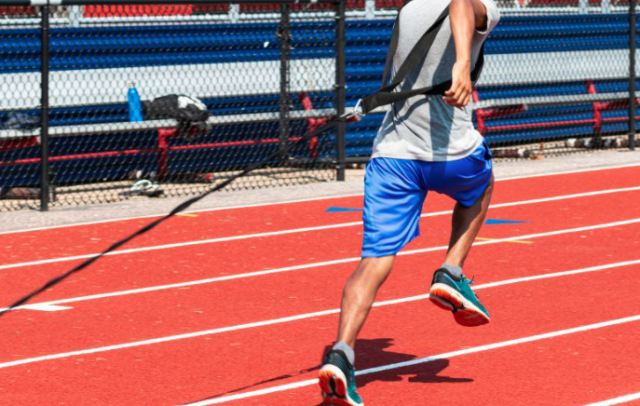Exercise: parachute jogging. A workout for those who like to challenge themselves

The fitness industry is booming. Yesterday’s Swedish walls in gymnasiums are being transformed into modern gyms with a large number of exercise equipment and improvised equipment for every taste and request. This also applies to running, which we will talk about today.
To keep your body from getting used to training, you need to try different types of cardio and strength training. Morally it helps to find something to do for the soul, physically – to feel and track progress. Professionals are also in constant search: they update training programs, add new exercises. Today the sports world can provide athletes with simulators that allow them to plunge into a new reality and experience unique emotions. For example, the parachute running mode on treadmills,
Parachute jogging: what gives
Parachute work is a common type of training in our time. It is often used by athletes of the average and high level of training and is actively used in SPF (special physical training), where explosive work is required. Some of the key benefits of a parachute are:
- development of strength and endurance;
- improved coordination.
Outdoor athletes can purchase a dedicated jogging parachute. If you like working out in a fitness studio, check with the staff about a special belt, an alternative to a parachute, which is attached to a treadmill. In addition, many clubs are increasingly incorporating this type of exercise into their group training program.
The parachute mode alternates with the athlete’s main training program. It is well suited for varying workouts and achieving better results. Do not despair if you are new to the sport, as the parachute is suitable for all fitness levels with the correct dosage of equipment. The equipment does not create strong pressure on the work of the leg joints: everyone can use it.
The parachute develops strength well, especially for those who train to develop fast muscle fibers. The parachute is ideal for sprinters and those who work long distances: primarily the work is aimed at endurance.
The program has different weight formats and the size of the parachute itself. The load of the parachute is based on the weight of the athlete. You need to be careful when working with a parachute, as with other simulators. Running also develops coordination – one awkward movement during acceleration can lead to injuries and a fall. Regardless of what kind of work is in front of the athlete, during the parachute, the calf muscles, biceps, and quadriceps of the thigh, as well as the muscles of the core, are actively working.
Increasing the load works in several ways. The easiest is to work at an increased speed. A more interesting option is running against the wind. The optimal load is usually set by the coach, analyzing the training of the athlete. But you always have to start with small goals. For example, from short distances of 30 meters and by the end of the workout, smoothly walk up to 100 meters. Again, it all depends on the training program that the coach schedules. If you train on your own, focus on gradual progress, do not try to cover long distances or reach the fastest speed.
- 2 interval segments of 30 or 50 meters (depending on the level of training) with a minute of rest between them;
- Stretch after two intervals to get some rest;
- This is followed by four interval segments of 30 or 50 meters, between which you can rest for a minute;
- After two intervals, rest again by stretching;
- Further increase: two interval segments of 70 or 100 meters, between which rest for a minute;
- Stretching;
- Repetition: two intervals of 70 or 100 meters with a minute of rest between them;
- At the end, take a parachute lift and run another 30 meters at acceleration;
- Final stretch.